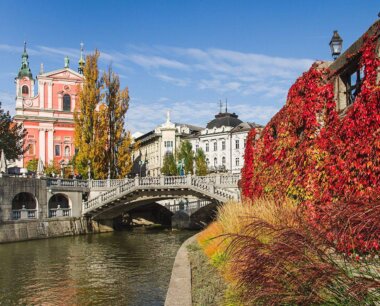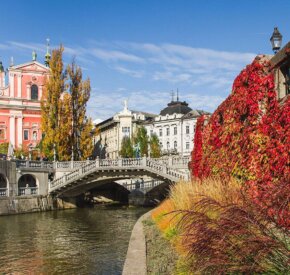
A wild-west weekend in Almeria
Searing heat, rough rocks and parched riverbeds and only a two hour flight from the UK, welcome to Europe’s only desert…
I’d been walking for hours alone across the desert when I realised I was lost. There was a sickening dry heat and the landscape offered no comfort or shade, bar the trite shadow of an occasional cactus. My drinking water was now the temperature of blood and reduced to about an inch in the bottle. The prospect of retracing my steps for hours with blistered feet and a swollen tongue was, to put it mildly, unappealing.
Luckily I was in Spain, not the Sahara, and the nearest village was only a few kilometres away. I had come to the Paraje Natural Desierto de Tabernas, Europe’s only genuine desert, on a short bus ride from Almería, a coastal resort in the south-east.
As the bus zigzagged over the Andalucían hills, I had been in recognisably Spanish company. The two women sitting in front had lustrous black eyes and hair. Unlike me, they hadn’t shut out the searing light by drawing the curtains, but seemed to flourish in it.
Amid giggles, one of them told a joke, the punch line of which was: “Open the door, Lola!” An old man, sitting opposite them and clutching a dried-out chorizo, started to wheeze with laughter. The desert, when it appeared, came almost without warning, except for the odd bar named ‘Alamo’ or ‘El Paso’. One minute the landscape was the familiar Andalucía of whitewashed villages and citrus groves; the next it had changed abruptly. It was not sandy but rugged and gaunt – ranks of grey and mud-coloured mountains sat like the haunches of wasting dinosaurs, with a patchy vegetation like the last traces of mangy fur. Elephant-coloured peaks receded into a purplish mist made not of humidity but suspended and motionless dust.
If the view seemed oddly familiar, it was. The Spanish desert was the set of countless Westerns, and its dry riverbeds and pockmarked gullies had stood in for frontier America on numerous occasions. Here Clint Eastwood had shot Eli Wallach from the gallows in The Good, the Bad and the Ugly, and a harmonica-riffing Charles Bronson tangled with Claudia Cardinale in Sergio Leone’s epic Once Upon a Time in the West.
Imitating Arizona
Ghost towns from these productions still squat on the hillsides, sometimes neighboured by a clutch of tepees.
The region specialised in imitating Arizona, but stood in for other places too. Scenes from Cleopatra, Conan the Barbarian, and Asterix had all been shot here. (The Almería desert had been, it seemed, almost anything but its real self.) On the wall of a local mocked-up saloon bar, the autographed portrait of an actor said: ‘El cine es mentira’ – film is a lie. Tabernas, I thought, knew it better than most.
It was Tabernas’ real self I wanted to see, though, and mercifully there were no film crews there that day. As my desert guide Cristina took me in a 4WD over its cracked and dried-out riverbeds, up and down slopes, and into the kind of gullies and clearings off which you expected to hear bullets ricocheting, we saw no one.
For me the starkness of the desert was alienating, but for Cristina it was part of its inspiration – a landscape stripped of all ornament, just rock and mud and sky. And sometimes rain, too, she warned me, which came rarely but could strike with an Old Testament ferocity; a group of incautious riverbed campers were drowned in a flood a few years back.
For Cristina, Tabernas seemed to be a vocation. She keeps two camels named Sergio and Cleopatra (of course) in her garden, and these days she reads mainly geology books, finding the subject inexhaustibly interesting. Often she would jump out of the car to show me this or that detail. These patches of moisture, she told me, were the seepings-through of underground water, heavy with the salt which gave the desert its sea-smell and sometimes coated the leaves of plants. The region, she added, had once been cultivable – hence the irrigation tunnels pickaxed through the mountainsides, and the remains of broken-down cottages, disintegrated to piles of bricks, and gaspingly dried-out wells. Now, apart from cacti, the only plants that grow here are pugnacious little shrubs that seemed about to burst into flame, and spring flowers, desiccated as soon as they bloomed.
Step back in time
The next day I hiked a route Cristina had designed for me, along the dehydrated riverbeds, across a central plateau dotted with the remains of those long-abandoned houses, and up towards the tepee settlements poised on the hill. Today the park seemed more nuanced and biblical, a rough-hewn landscape like carelessly broken nougat, in which I half-expected to see bearded prophets shattering tablets of stone.
The Eastern atmosphere was reinforced by a sudden clutch of palm trees – an oasis created decades before, I’d been told, for Lawrence of Arabia, when Tabernas had body-doubled for Jordan. Now fallen palm leaves lay skeletally on the ground, and lizards darted among black and orange stones, broken up by the occasional rusting oil drum.
Of snakes and scorpions, which Tabernas numbers among its residents, I saw none. Almost as rare were human beings – only the very occasional teenager on a scramble bike roaring past, spraying up grey dust in his wake. Otherwise I picked my way across it alone, imagining aerial shots from high above, myself the only moving figure in the dead-baked emptiness.
The monotony might have been oppressive were it not broken up by the rock formations, always changing, always suggesting something. Some were spread flat like rough plastering or thick peanut butter; others evoked elephant shins, hippopotami, critters from a science fiction film.
Yet it was only when I came across what had obviously been, long back, a cultivated field that I realised why Tabernas was so disquieting. With its parched terrain, which could feed only the most stubborn forms of life, it was what any country might look like after drastic climate change. Just looking at the ground’s cement-dust surface and treading on its hot grey grit made me dream of dripping vegetation and crystalline water.
My own water was now as good as finished, though the desert torments – even the scaled down and Westernised kind – were to be denied me. A delivering angel soon puttered past in the form of Carlos, a local farmer, who ferried me in his car to a nearby village. In the cool interior of a bar I sat and swigged my way through several cold drinks, sucking on the ice-cubes, ears itching with the heat of the day. The proximity of such civilisation seemed laughable. No, I thought – I wasn’t yet Peter O’Toole staggering stricken and blistered into the British Officers’ Club. But as a first step down that dusty road it was, for this Europe-hugging beginner, just enough.




















